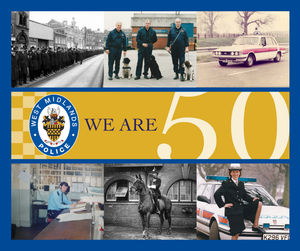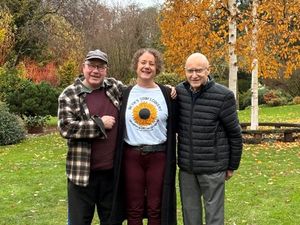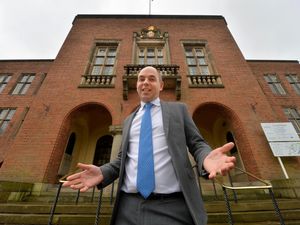Heritage manager reflects on golden celebration year for West Midlands Police
The heritage manager of West Midlands Police has spoken about her highlights from the golden anniversary celebrations for the force in 2024.
Corinne Brazier said the 50th anniversary of West Midlands Police had been an opportunity to shine a spotlight on the impact the force had made since the amalgamation of the West Midlands Constabulary, Birmingham City Police and Coventry to form West Midlands Police in April 1974.
Ms Brazier, who oversees the West Midlands Police Museum at the Steelhouse Lane Lockup as well as a list of other roles looking after the heritage of the force, said it had been really interesting to hear the stories of those who were there at the time and how they worked.
She said: "It was really interesting to hear the different perspectives from people in those different forces, and to hear about how the force tried to create one team, working together across those disparate areas.
"The kit back in 1974 largely consisted of a radio (the two-piece Pye Pocketfone) a whistle (depending on where you served previously), a wooden truncheon (with a smaller version for policewomen) and if you worked in Birmingham, a small medical kit containing a bandage and a sling."
Ms Brazier also spoke about meeting one of the officers from that time and hearing his stories and learning about how the world of policing had evolved since.
She said: "In February, I had the absolute privilege of meeting former officer Gordon Law.
"I had read about his story in the police museum for years, from a display highlighting his story as the last officer to use his whistle to summon assistance in 1966, shortly before personal two-way radios were issued to officers.

"From whistles and police boxes, to contact centres and mobility devices, the world of policing and crime looks very different now compared to when Gordon first joined."
Ms Brazier also reflected on her experiences of looking at the history of the operational support officers, as well as the role of women within that unit and other parts of the force.
She said: "In June, we took a look back at the history of our operational support unit (OSU).
"The earliest version of what we would now refer to as the OSU was known as Capper’s Commandos, and they were regularly sent in to areas experiencing high levels of criminality or particular problems, often in plain clothes.
"Women were not part of the OSU until 1990, when Kerry Delaney started in the unit and became the first female officer to complete public order training.
"In August I met another one of my heroes as I had the pleasure of meeting Kay Lenyk (nee Weale), who was the first woman mounted officer in the West Midlands, who shared her experiences of what it was like.
"When Kay Lenyk started, they had literally nothing for women and she had to provide all of her own kit. It was also from Kay that I learned about the role of female officers during the miners’ strikes.
"As they were not allowed to do public order training, they ended up largely running the police stations back in the West Midlands whilst the men were away on mutual aid."
To find out more about the heritage side of West Midlands Police, go to the Heritage website.





